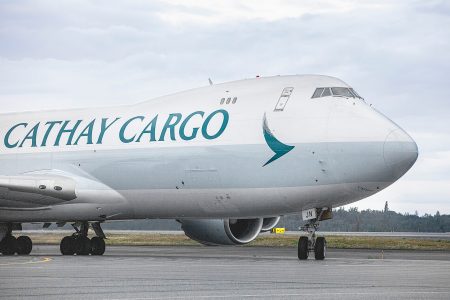In recent years, a number of countries have introduced PLACI (pre-loading advance cargo information) data requirements, requiring more customs information ahead of departure and tightening up security for air cargo. Additionally, Canada and the US, and, most recently, Australia have really beefed up their requirements for shipments from countries within Europe and Central Asia. Clarence Li, Cargo Security & Compliance Manager, outlines how these latest changes will affect Cathay Cargo and its customers.
Which originating countries are affected by these new requirements?
The three destination countries that have recently introduced the need for additional data for shipment imports are the US, which already required advance information for all imports, Canada and Australia. These additional requirements affect shipments from 55 originating countries, all in Europe and Central Asia. You can click here to see the list of origin destinations, which is common to all three destinations.
Why are these requirements being added?
These requirements have been put in place because of the evolving challenges in the global air-cargo operating environment influenced by the current geopolitical situation. That said, there has been a trend towards PLACI with schemes such the ICS2 customs requirements for shipments to the EU and the TSA’s (Transportation Security Administration) existing ACAS (Air Cargo Advance Screening) programme in the US, which was more linked with security. The new requirements for Australia, Canada and the US will be followed later this year and early next with customs PLACI requirements for shipments to the UAE and Canada.
What are the additional requirements for the US?
There are two strands to the new requirements ¬– one is based around the US’s existing ACAS programme, while the other is an EBR (Established Business Relationship). The existing ACAS scheme for the US, introduced in 2019, required seven pieces of data about the shipper and consignee, for which there are data-fields on the e-air waybill (eAWB) but this has been supplemented by 13 more. This includes shipper and consignee email addresses, phone numbers, customer account details, billing type, website IP addresses and all the way up to biometric data if for example the shipment is from a walk-in customer.
Is your system ready to process this additional information?
Our system can accommodate most of but not all the new data fields, and we are looking into additional system development. This is actually an obstacle for the whole industry, which means at this moment in time not all of the data can be inputted into the paper AWBs or eAWBs. However, most of the data can be entered into Ezycargo and acceptance staff at cargo terminals can add the additional information into the system.
How about the ‘Established Business Relationship’ strand?
In high level terms, this is essentially a declaration that acknowledges that the forwarder and original shipper have an existing relationship. If this is not the case, then that will affect the ability to place the shipment onto passenger and freighter aircraft without additional screening and security checks, even down to piece level in some instances. This has been an issue for the industry because unlike the list of origin destinations, each jurisdiction has a slightly varying definition of what is required for an EBR declaration.
What happens if the authorities want further information about a declaration?
It's a declaration, so the forwarder does not have to show us, as the carrier, evidence of the relationship. Of course, if at a later stage a government authority asks for further investigation, we would need to approach the cargo agent and ask them for the evidence proving the relationship between the agent and the shipper.
How has Cathay Cargo responded to these requirements?
We have already imposed an embargo on US and Canada-bound cargo originating from the 55 countries because volumes for cargo from those originating countries to the Americas via Hong Kong is not significant. Simultaneously, suspicious settlement methods, such as cash transactions, are forbidden for all US and Canada-bound shipments. However, for shipments bound for Australia, where there is quite high demand, we must follow the requirements imposed by the Australian government, and have additional checks or extra security screening for those shipments.
How do I find out what to do about these new requirements?
We will post information on cathaycargo.com as and when we get it, or keep in touch with our sales teams.
Australia’s new EBR requirements:
From the Australian Department of Home Affairs
Established Business Relationship means an association between:
- Person or entity tendering cargo for air transportation;
- and the freight agent, which includes freight forwarders, regulated agents, known consignors or other aviation industry participants
EBR evidence includes:
- Account establishment with physical billing address and payment record through invoice or billing records; or
- Documented sales history with any contacts or activities; or
- Other documented correspondence or business records
Exemptions:
- Cargo weighing less than 500 grammes
- Mail with classes defined by UPU (Universal Postal Union) regardless of weight
- Australian Government items and diplomatic bags
- Company materials
- Special products (live animals, medical products, biological material and human remains)

